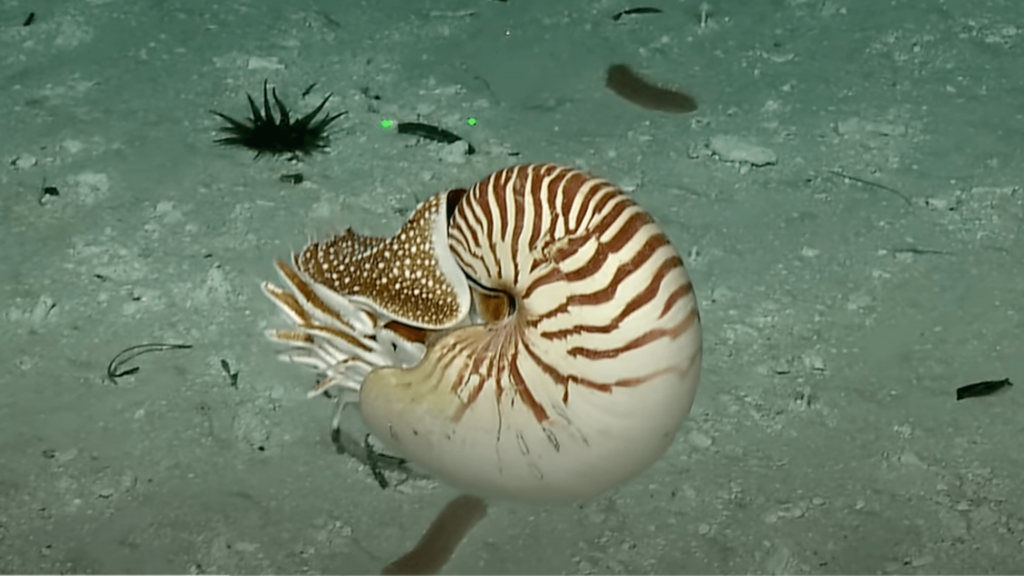[ad_1]
It took over 15 years and more than 1,000 remotely operated vehicle (ROV) expeditions, but researchers aboard the NOAA Ocean Exploration Trust’s Nautilus finally spotted their research vessel’s namesake in the wild. On December 3, operators of the ship’s Hercules ROV located four specimens of Palau nautilus (Nautilus belauensis) during the Nautilus Exploration Program’s ongoing, 17-day survey in the Palau National Marine Sanctuary.
“It’s finally happened!” one researcher exclaimed during the team’s livestream on December 3rd, with another adding, “A nautilus on Nautilus—a dream come true.”
While the team recorded these particular examples swimming 220-to-375 meters (roughly 721-to-1,230 ft) below the Pacific Ocean’s surface, the pelagic marine mollusk cephalopods can survive at depths approaching 2,500 feet. Their spiral-shelled bodies belong to one of Earth’s oldest families of animals, with fossil records indicating the squid relatives have changed comparatively little even after nearly 500 million years. Unlike an octopus’s eight tentacles, a nautilus features anywhere from 50 to over 90 appendages across digital, ocular, and reproductive classifications. Although their sight is limited due to rudimentary eyes that lack solid lenses, nine known nautilus species instead rely heavily on their olfactory senses to find food and mates.
The nautilus is rarely photographed or recorded on video due to their preference for driving through ocean depths enveloped in near-total darkness, which makes the Ocean Exploration Trust find that much more notable. The high-definition cameras aboard the Hercules ROV allowed for detailed, lengthy looks at the animals in their natural habitat. As the organization’s announcement explained, the Nautilus vessel isn’t directly named for the cephalopods, but in honor of Captain Nemo’s deepsea submersible in Jules Verne’s 20,000 Leagues Under the Sea. That said, researchers explained that “similar to the vertical movements of submarines, nautiluses are known for moving up and down in the water column,” and the animal’s name comes from the Greek word for “sailor.”
The NA169 expedition takes place from November 25 to December 12, and is focused on examining the complex oceanic interactions that come from major currents interacting with the region’s steep island slopes. According to the team, these relationships create circulation patterns that draw nutrient-heavy waters from deep in the ocean to the surface, which in turn fosters biological diversity in Palau’s marine ecosystem. When not analyzing these dynamics, the team is also conducting seafloor mapping excursions inside the Palau National Marine Sanctuary, while ROV surveys will highlight “biologically and oceanographically significant sites around the Palauan Islands.”
[ad_2]
Source link


